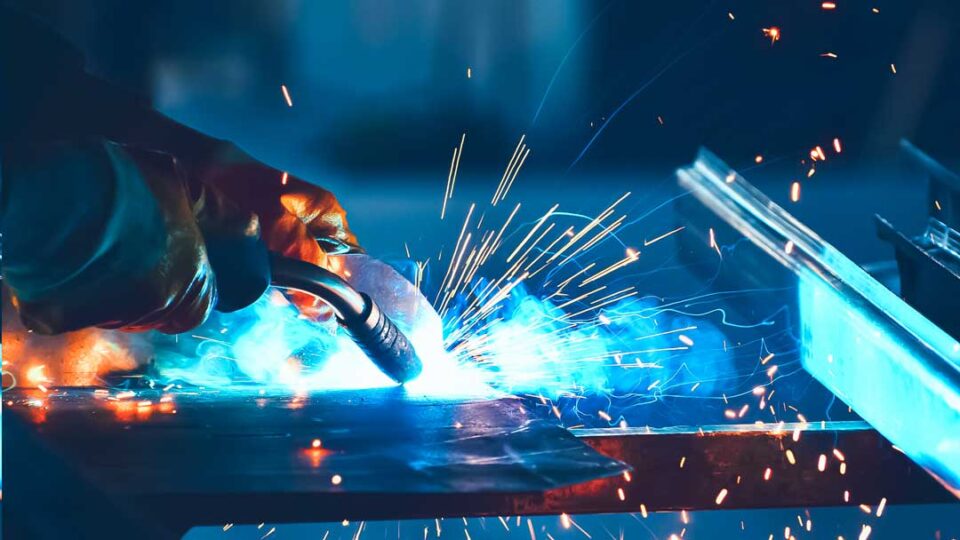Using and owning a laser cutter in most Australian jurisdictions without licensing is illegal. Lasers are capable of causing devastating injuries if not handled and managed according to health and safety legislation. Injuries from the laser itself can affect eyesight, but secondary injuries can occur from breathing in the fumes and dust emitted from use.
What are the dangers of laser-cutting machines, and how can you manage them?
Keep reading as we discuss the ins and outs of laser-cutting machines and safety.
What is laser cutting?
Laser cutting is a process used in manufacturing to provide more precise cutting for raw materials. It provides more accuracy for cutting a wide range of materials. Here’s how it works:
- High-energy laser beam – a laser uses highly concentrated and intense light beams emitted from a CO2 or fibre laser. The beam carries a lot of energy focused on a tiny point, allowing it to generate heat that rapidly melts, burns, and vaporises the material being cut.
- Removing material – to remove the material, a laser moves along a pre-determined cutting path. The path is defined using a software application to provide precise cuts with minimal distortion.
- Wide material range – you can use laser cutting for plastics, wood, ceramics, textiles, and many other material types.
- Complex and intricate details – need to cut tough material into delicate shapes? Laser cutting reduces the potential for material waste due to human error, providing stunning intricate results every time, no matter the difficulty of the material.
- Artistic applications – laser cutting can be used in an industrial setting but also provides value in a creative environment.
Although laser cutting can provide excellent results in artistic and industrial settings, it requires specific health and safety measures to ensure worker safety.
Why is air filtration needed for laser cutting?
Laer cutting fumes ventilation is a crucial element in using laser cutting safely. Here are some of the reasons why:
- Harmful fumes – a laser melts and vaporises the materials to cut them, and this can cause the release of hazardous fumes, particles, and volatile organic compounds. They can build up to cause health risks for workers, such as asthma and other respiratory conditions.
- Protecting worker health – capturing and removing airborne dust and contaminants will prevent workers from inhaling them. Inhaling these substances can lead to both short and long-term respiratory illness and could lead to litigation for your company.
- Improving cut quality – dust particles can interfere with the cutting process, damaging the laser optics and reducing the quality of the cut. By filtering these contaminants out, you can preserve product quality for consistent results.
- Environmental impact – laser cutting processes can contribute to pollution if you don’t invest in the proper ventilation solutions. The airborne pollutants contaminate all surrounding areas, compromising air quality. As a result, you could breach the environmental regulations in your area, minimising their environmental impact.
Filtered extraction vs. non-filtered extraction
The main question you might have when planning ventilation for laser cutting is whether to choose filtered or non-filtered extraction. Here are the advantages of each type to help make your decision.
Filtered extraction
Here are the benefits of filtered fume extraction for laser cutting:
- Cleaner air quality – filtered extraction captures airborne contaminants in a filter, completely removing them from the atmosphere, managing indoor air pollution effectively.
- Compliance – to avoid breaking environmental regulations, filtered extraction ensures your facility doesn’t emit harmful fumes into the surrounding atmosphere.
- Superior health and safety – filtered extraction helps maintain a safe working environment more than non-filtered extraction methods.

Non-filtered extraction
Here are the advantages of employing a non-filtered laser-cutting fume extractor:
- Simplicity – non-filtered extraction units are simple to install and maintain without a filter and won’t take up too much space.
- Suitability – non-filtered extraction is ideally suited to manage air quality for laser cutting low-harm materials like wood and plastic. If the environmental effects are minimal, you won’t need a filter.
- Low-cost – the installation costs are lower with non-filtered extraction fans as the process is more straightforward.
Use Fanquip extraction fans for managing laser cutting hazards
Laser cutting poses many health risks to workers, emitting harmful toxins, fumes, and compounds into the air. To mitigate these hazards and preserve cutting quality, you can invest in a non-filtered or filtered extraction fan – the type you choose depends upon the materials you’re using.
Using a laser cutter at a home business?
Fanquip have a range of small and portable ventilation equipment, perfect for smaller areas that still need adequet airflow for health and safety.
Contact us at Fanquip to learn about the different extraction fans for managing laser-cutting hazards. Our expert team of ventilation advisors will help you find the ideal solution for your industry and laser-cutting materials.
